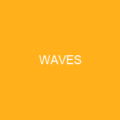Understanding Coasts: A Vital Interface Between Land and Sea
Imagine a line that dances between land and sea, ever-changing yet always fascinating – this is the coast. It’s more than just a boundary; it’s a dynamic interface where nature’s forces meet human needs.
The Definition of Coasts: More Than Just Land Next to Water
A coast – also called the coastline, shoreline, or seashore – is the land next to the sea or the line that forms the boundary between the land and the ocean. It’s a place where the earth meets the water, creating an environment rich in biodiversity and natural beauty.
Coasts as Ecosystems: Biodiversity Hotspots
Coasts are not just picturesque landscapes; they are vital ecosystems teeming with life. On land, freshwater or estuarine wetlands provide habitats for various species. In wave-protected areas, salt marshes, mangroves, and seagrasses thrive, offering nursery grounds for fish and shellfish.
Coasts in Physical Oceanography: A Broader Perspective
In the realm of physical oceanography, a shore is the wider fringe that is geologically modified by water-induced erosion. Coastal ecosystems play a crucial role in protecting against sea level rise and tsunamis. Mangroves, for instance, are not just picturesque; they serve as vital sources of wood for fuel and building material.
Economic Importance: A Double-Edged Sword
The economic importance of coasts is immense, making many communities vulnerable to climate change. As sea levels rise and extreme weather events increase, the resilience of coastal ecosystems becomes more critical than ever. The United Nations’ Sustainable Development Goal 14, ‘Life Below Water,’ aims to preserve these vital marine environments.
Coastal Ecosystems: Under Threat
Despite their importance, coastal ecosystems have received insufficient attention for restoration. The coastline paradox – the irregularity of coastlines that makes it difficult to determine exact perimeters – adds another layer of complexity to managing these areas. Coastal zones are regions where land and sea interact, influencing sediment deposition and erosion.
Tidal Ranges: Shaping Coastal Landscapes
The tidal range determines the extent of sediment deposition or erosion. High tidal ranges allow waves to reach farther up the shore, shaping cliffs and headlands. Waves erode coastlines by breaking and releasing their energy, forming various landforms such as natural arches, sea caves, stacks, and wave-cut platforms.
Coastal Tourism: A Boon and a Bane
Coastal tourism is a significant economic driver for many communities. However, it also poses challenges in terms of coastal management. Poor practices can lead to erosion and vulnerability. Emergent coasts have landforms above the high tide mark, while submergent coasts are below this line.
High Energy vs Low Energy Coasts
Coastal environments can be categorized as high energy (erosional) or low energy (depositional). High energy coasts feature cliffs and headlands, while low energy coasts are sheltered from waves. Swash is the shoreward flow after a wave breaks, while backwash is the water flow down the beach.
Coastal Landforms: Shaped by Waves and Wind
The form of breaking waves determines whether they deposit or erode granular material along the coast. Steep waves that break with the surf plunging down onto the shore slope expend much of their energy lifting sediment, while low waves that spill break expend more of their energy in the swash carrying particles up the beach.
The Term ‘Riviera’: A Historical Perspective
The term ‘Riviera’ refers to a shoreline, especially one that is sunny and popular with tourists. The Ligurian Riviera is an example of this term being used historically to refer to the coast of the Ligurian Sea, while it has also been applied more broadly to describe any shoreline.
Coastal Categories: A Classification System
There are several types of coastal categories, including cliffed coasts, flat coasts, graded shorelines, primary coasts, secondary coasts, erosional coasts, depositional coasts, active coasts, and passive coasts. Each type has its unique characteristics influenced by geological processes.
Coastal Features: Formed Through Interaction
Coastal features such as cliffs, natural arches, sea caves, stacks, stumps, wave-cut notches, and wave-cut platforms are formed through the interaction of waves and wind action with the coastline. Gently sloping wave-cut platforms develop early in cliff retreat.
The Littoral Zone: A Vital Habitat
The littoral zone extends from the high water mark to permanently submerged shoreline areas, hosting a wide range of marine habitats. Wildlife includes larger animals like puffins, sea turtles, rockhopper penguins, and smaller organisms like barnacles, corals, sponges, starfish, mussels, seaweeds, fishes, and sea anemones.
Coastal Waters: Under Threat
Coastal waters face various environmental impacts such as pollution from marine debris, oil spills, and nutrient pollution. Sea level rise causes erosion and saltwater intrusion. International attention is focused on Sustainable Development Goal 14 ‘Life Below Water’ to preserve these vital ecosystems.
The Future of Coasts: Restoration and Resilience
Coastal ecosystems have received insufficient restoration attention, but the United Nations has declared the UN Decade on Ecosystem Restoration from 2021-2030. This initiative aims to address the challenges faced by coastal areas and promote sustainable practices.

As we look towards the future, it’s clear that coasts are not just geographical features but critical components of our planet’s health. By understanding and protecting these dynamic environments, we can ensure a sustainable future for both nature and humanity.
You want to know more about Coast?
This page is based on the article Coast published in Wikipedia (retrieved on January 27, 2025) and was automatically summarized using artificial intelligence.





